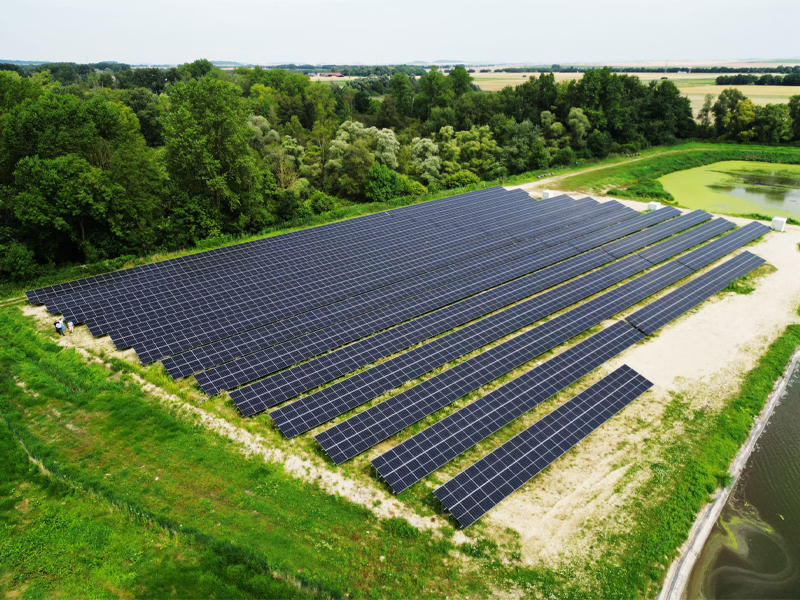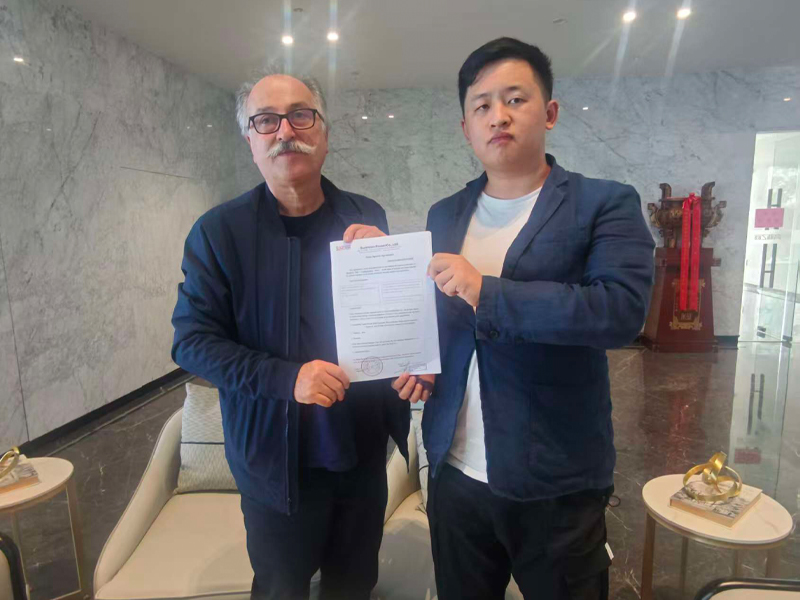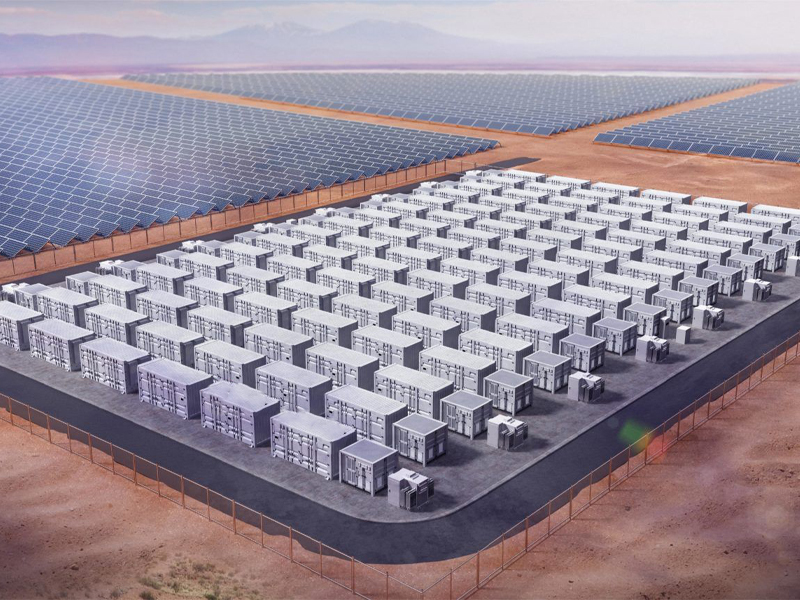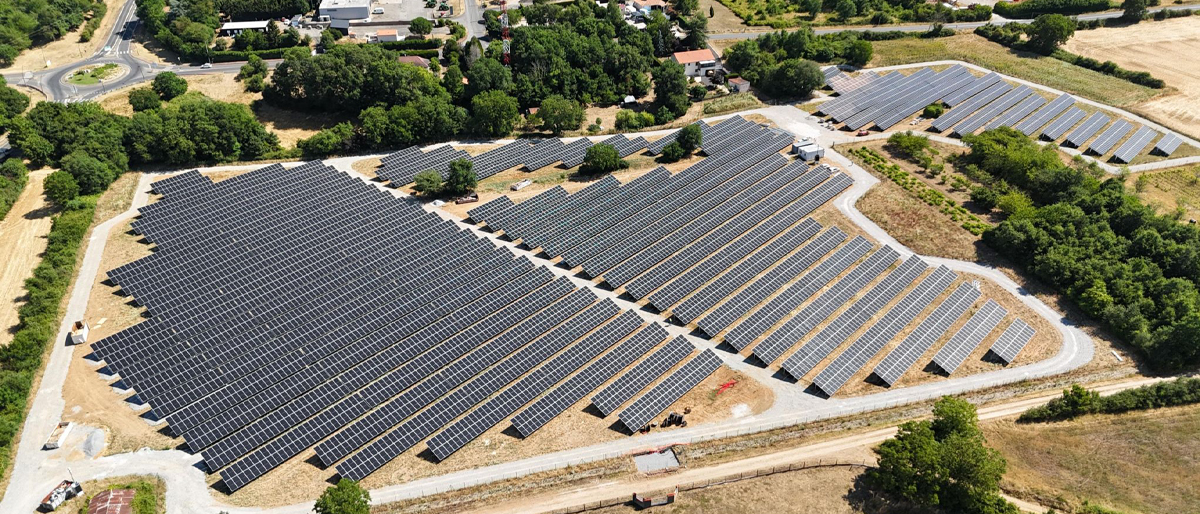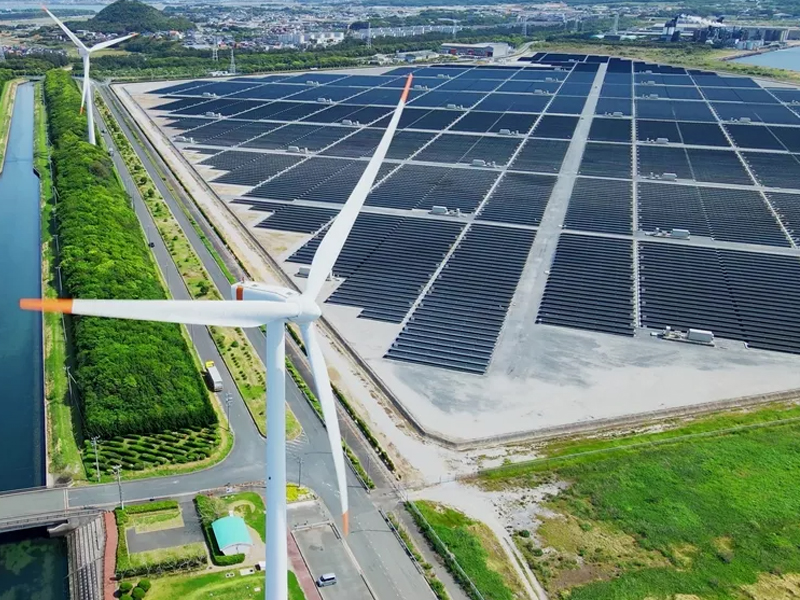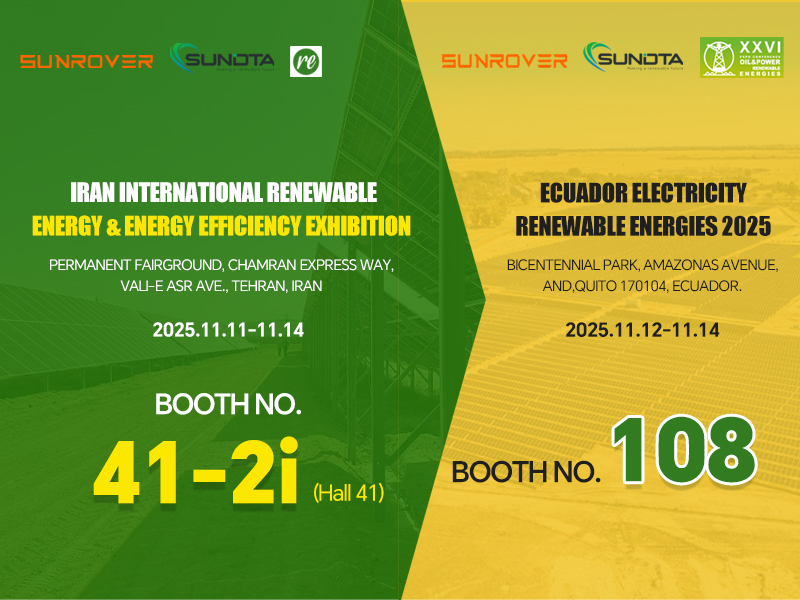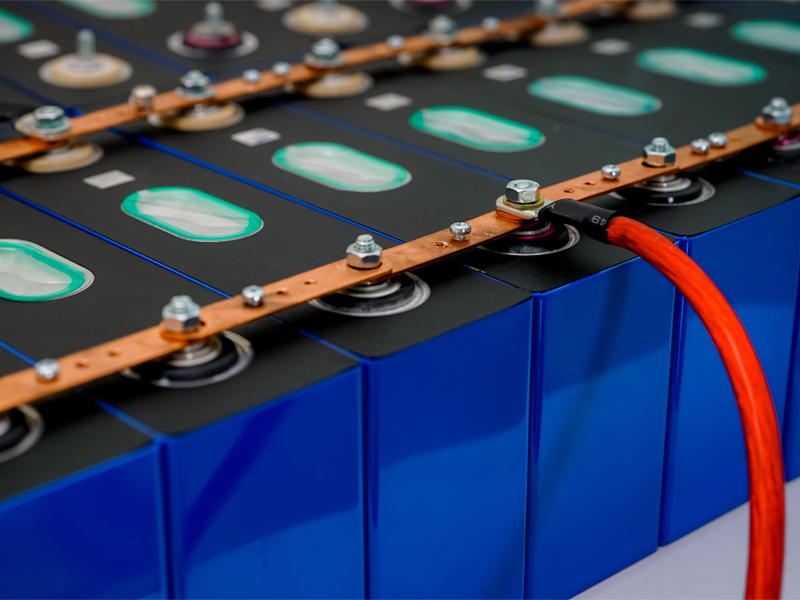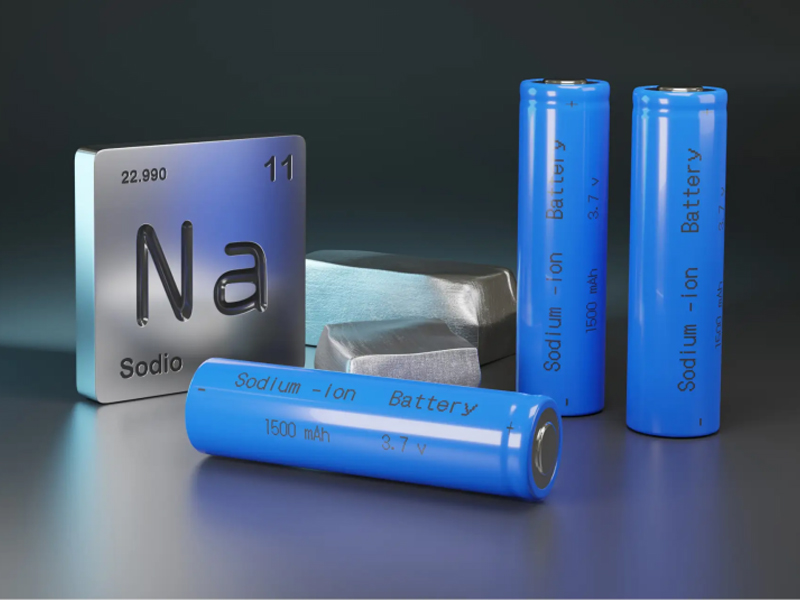4 million RMB to build a photovoltaic chicken farm! Do “photovoltaic chickens” taste better?

Benefits of installing photovoltaics in chicken farms
There are many benefits to installing photovoltaics in chicken farms, which are mainly reflected in the following aspects:
1. Environmental protection and energy saving:Photovoltaic power generation is a clean, Renewable Energy that does not produce pollutants and greenhouse gases, helps reduce damage to the environment, and is in line with the concept of sustainable development in modern society. In addition, it can effectively reduce the consumption of fossil energy, reduce the energy consumption cost of chicken farms, and improve economic benefits.
2. Create additional income: By selling excess photovoltaic power generation to power grid companies, chicken farms can obtain additional income. For chicken farms, this not only increases economic sources, but also helps to improve overall operational efficiency.
3. Resource complementarity: Chicken farms usually occupy a large area and have plenty of sunshine, which is suitable for installing Photovoltaic Panels. This can not only use solar energy to generate electricity, but also realize the dual use of land resources, and improve the comprehensive benefits of land.
4. Policy support: Many regions have given certain policy support and subsidies to photovoltaic power generation. Chicken farms installing solar energy systems are expected to obtain relevant subsidies and preferential policies, further reduce investment costs, and improve investment returns.
5. Regulate indoor temperature: While absorbing sunlight and converting it into electrical energy, solar panels can also effectively regulate indoor temperature, achieve the effect of keeping warm in winter and cooling down in summer, and create a comfortable growth environment for poultry.
These benefits make photovoltaic power generation an ideal energy choice for chicken farms.
Pay special attention to installation issues
Chicken farms are usually located in areas with sufficient sunlight, which provides good natural conditions for the application of photovoltaic technology. However, the layout and building structure of chicken farms limit the installation location and area of photovoltaic panels to a certain extent, which may affect the improvement of energy utilization. Therefore, when planning a Photovoltaic System, it is necessary to comprehensively consider the actual situation of the chicken farm and the installation requirements of photovoltaic technology, while ensuring that the photovoltaic panels can fully receive sunlight without affecting the normal ventilation and lighting of the chicken house.
In 2023, a photovoltaic egg-laying chicken farm in Treviso Province, Italy caught fire, and the fire directly killed more than 20,000 laying hens on the farm. As for the cause of the fire, the local fire department said: "The fire may have been caused by the photovoltaic system, which burned more than 1,500 square meters of heat insulation, produced a lot of smoke, and caused tens of thousands of laying hens in the shed to suffocate."
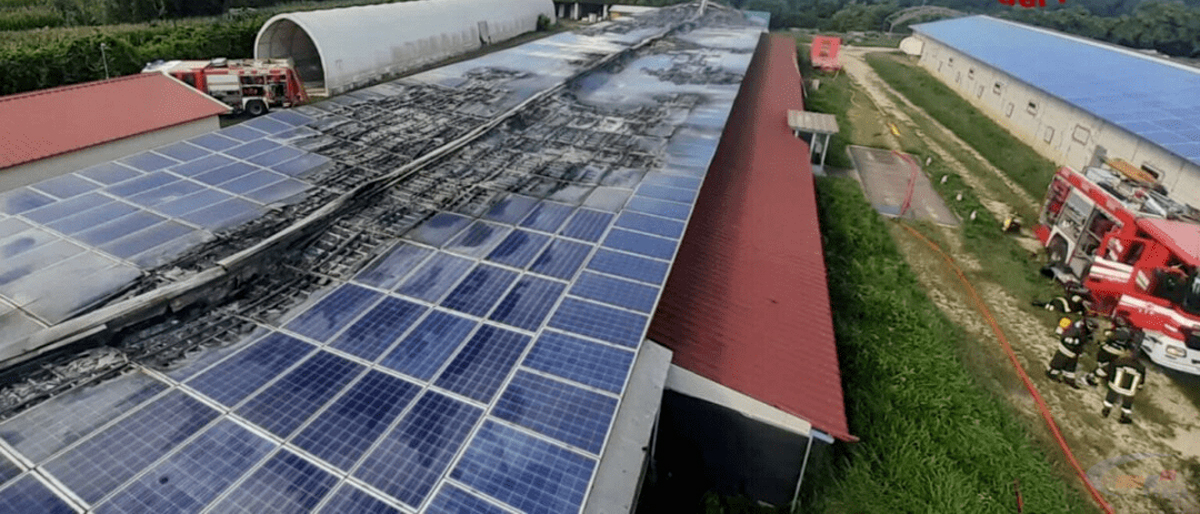
As can be seen from the picture, the photovoltaic Power Station is almost attached to the roof and cannot achieve ventilation and cooling effects.
When setting up photovoltaic equipment in a farm, it is necessary to ensure that the height of the equipment is one to one and a half meters higher than the roof. Such a height setting can not only allow the photovoltaic panels to receive sunlight better, but more importantly, it can ensure that there is enough space for ventilation under the power station. At the same time, it is also possible to consider setting up auxiliary equipment such as water tanks under the power station to reduce the ambient temperature through water evaporation and further improve the cooling effect. Finally, regular cleaning and maintenance are equally important to prevent dust and debris from clogging the vents and affecting the ventilation effect.
Photovoltaic + agricultural model
Since the national "dual carbon" policy has been promoted, my country's photovoltaic power generation application model has become more and more diversified, and the cross-border integration trend of photovoltaics combined with different industries has become more and more prominent, and "photovoltaic +" has ushered in a new era of vigorous development. Among them, the "photovoltaic + agriculture" model has brought great benefits to farmers' production work in the new era. It not only solves the power supply problem of water extraction and irrigation machinery power, avoids the situation of photovoltaic industry and agriculture competing for land, but also can sell the extra electricity to the State Grid, which is simply killing two birds with one stone.
This combination of photovoltaics and agriculture not only provides farmers with reliable power support, but also injects new vitality into agricultural production. Through the photovoltaic power generation system, farmers can use solar energy resources to generate electricity to meet the power needs of farmland irrigation, agricultural machinery and equipment use, etc. Compared with traditional power generation methods, photovoltaic power generation is not only environmentally friendly, but also saves energy costs.
In addition, the installation and maintenance of photovoltaic power generation systems are relatively simple. Farmers can master relevant knowledge and skills through training and technical support to improve their own capabilities and competitiveness. The promotion and application of photovoltaic power generation systems can not only improve the efficiency and quality of agricultural production, but also increase farmers' income sources and improve the development of rural economy.
Therefore, the promotion and development of the "photovoltaic + agriculture" model is of great significance to the realization of agricultural modernization and rural revitalization. In the future development, we should further increase the support and promotion of the "photovoltaic + agriculture" model to provide farmers with more development opportunities and space. Only in this way can we better play the advantages of photovoltaic power generation, promote the transformation and upgrading of agricultural production, and achieve sustainable development of the rural economy.
Photovoltaic + breeding model
As an innovative model that combines agriculture and photovoltaic power generation, photovoltaic farms can not only provide farmers with a reliable source of income, but also bring many benefits to agricultural production. After a deep understanding of the advantages of photovoltaic + agriculture, let's discuss how much income photovoltaic + breeding farms can bring to farmers in combination with actual cases.
The first photovoltaic smart chicken farm in the country
In 2022, the first photovoltaic smart chicken farm in the country was officially put into use in Xinglong Village, Dade Town, Kaizhou District, Chongqing. It has projects such as photovoltaic power generation, organic fertilizer production and deep processing of eggs.
It is reported that the total roof area of the chicken farm is 3,000 square meters, all of which are equipped with solar photovoltaic panels. The annual power generation is expected to be more than 700,000 kWh, which can not only solve the self-use of the chicken farm, but also provide surplus power to the Internet. This comprehensive utilization is equivalent to planting 3,700 trees, saving 2,640 tons of power generation coal, reducing carbon dioxide emissions by 650 tons, and reducing dust emissions by about 180 tons.
At the same time, the chicken farm invested 12 million yuan to introduce two national first-class digital breeding equipment, using automatic feeding system, central manure feeding system and centralized manure fermentation process, and built an organic fertilizer production line, which truly achieved "no feed in the sky, no manure on the ground", and almost "zero pollution" to the environment.
At present, 200,000 chicks are growing vigorously. After the formal laying of eggs, the daily output of the base will exceed 180,000.
"Pearls" flying under photovoltaic panels
At the foot of the towering Taihang Mountains, a large photovoltaic power generation panel was installed on the rocky beach of Xichitou Village, Gaozhuang Township, Huixian City, Henan Province. According to village cadres, this photovoltaic power plant covers an area of 620 mu, and the village allows villagers to develop breeding and planting industries under photovoltaic panels through renting back. At present, this photovoltaic power plant also grows many Chinese medicinal materials, watermelons, etc., and has become a base for villagers to increase their income.
Among them, there is a large guinea fowl breeding farm.
The initial investment of this guinea fowl farm is 4 million yuan. There are young chicken sheds and adult chicken sheds under the photovoltaic panels. These guinea fowls are classified and fed scientifically, and can be put on the market for sale after 4 months of breeding. The number of guinea fowls raised has grown from 7,000 at the beginning to 100,000, a scale rarely seen in the country.
A large guinea fowl farm has been built under the photovoltaic panels, and the deserted place in the past is now bustling. Guinea eggs are very popular, and the market price is twice as high as ordinary eggs. It costs more than 20 yuan to raise a guinea fowl, and the total income from selling chicken feathers and adult chickens can reach more than 50 yuan, which is a considerable profit. Many people come to visit and learn, and the breeding story under the photovoltaic panels is spreading more and more.
Photovoltaic + beef cattle breeding model
In October 2022, in order to improve the utilization rate of cattle sheds and reduce the cost of beef cattle breeding, Tangshan Lilingtuo Ecological Breeding Professional Cooperative invested in installing a 2,000-kilowatt photovoltaic power generation panel on the top of the cattle shed, combining intelligent beef cattle breeding with photovoltaic power generation.
The cooperative is located in Lilingtuo Village, Daxinzhuang Town, Fengnan District, Tangshan City. In recent years, Lilingtuo Village has built an 86-acre beef cattle breeding base with the industrial development model of "enterprise + cooperative + farmer", processing feed according to scientific ratios, raising beef cattle, and monitoring the cattle shed environment through remote monitoring systems, intelligent disinfection systems, etc., to achieve intelligent beef cattle breeding.
In January 2023, the photovoltaic power generation project was connected to the grid for power generation. At present, the photovoltaic power station has generated a total of 883,600 kWh of electricity, with a total settlement income of 315,600 yuan. Photovoltaic panels can not only generate electricity, but also insulate and cool the cattle shed. The cooperative can make a profit of 2,000 yuan from selling a finished beef cattle, and is expected to earn about 2 million yuan a year.
After the project is completed, in order to ensure the reliable operation of photovoltaic power generation equipment, professionals will be arranged to conduct regular electricity safety inspections, guide customers to maintain photovoltaic power generation panels, and ensure that the cooperative can use electricity and raise livestock with peace of mind. The cooperative has also created more than 50 jobs for the villagers of Lilingtuo Village.
The photovoltaic farming model can not only provide renewable energy and reduce dependence on traditional energy, but also effectively utilize land resources, increase the output value of poultry meat, and achieve a win-win situation of economic and environmental benefits. However, photovoltaic farming also faces some challenges, such as the high cost of equipment maintenance and management, and the shading of crops by photovoltaic panels may affect the growth of some crops. Therefore, in the process of promoting photovoltaic farming, it is necessary to comprehensively consider various factors such as economy, environment and agriculture, and formulate scientific and reasonable policies and management measures to achieve the sustainable development of photovoltaic farming.


